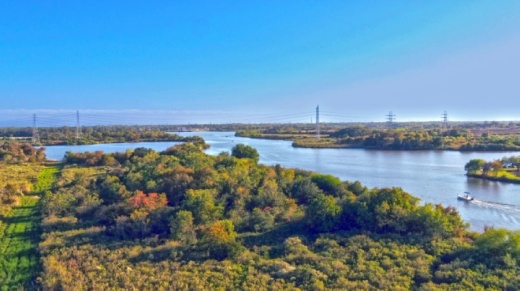In May 2019, voters overwhelming approved issuing $73 million in bonds to fund 21 drainage projects across the city to alleviate neighborhood flooding during storms. In the same election, voters approved $72 million in bonds for 10 traffic projects.
However, the 21 drainage projects are now expected to cost $140 million—nearly twice what city officials budgeted, Engineering Director Chris Sims said during a March 8 workshop.
As such, city officials have removed at least one project and reallocated funds to other projects, which brings the cost back down to just over $72 million when expected grant dollars are included, Sims said.
Of the 21 projects, six are subdivision improvements, such as creating outfalls in neighborhoods; 11 are localized improvements, such as updating storm sewers; and four are regional improvements, such as creating detention ponds.
Of the six subdivision improvements, all but one are expected to cost more than originally budgeted by a total of $225,000—an 11% increase over the original budget of $2.04 million. However, with more grants expected to come, the projects will actually cost about $720,000 less than originally budgeted, Sims’ data showed.
Other projects did not fare so well: The 11 localized projects totaled $35.6 million when the bonds were issued. Now, they are expected to cost $45.5 million, with only two of the 11 not going over their original budgets, Sims said.
Council Member Chad Tressler asked why many of these projects are expected to cost twice as much as originally budgeted. He also asked why Atlas 14 rainfall data was not factored into the projects’ budgets before they went before voters, considering that the data has been available for years.
“I don’t have a good answer for that,” Sims said. “I’m sorry.”
Sims did say some of the projects have “scope creep"—that they have grown in size and scale since they were originally approved by voters—which is a factor of the increased cost.
Even further from projections are the four regional projects, which were expected to cost $31 million but are now set to cost $92 million—nearly three times the original estimate, Sims said.
As such, city staff have taken a closer look at the projects to see how to save money.
One decision point was for Phase 1 of the improvements to the Bay Ridge subdivision. To create a levee to lift the neighborhood out of the 100-year flood plain would cost $6.2 million over budget, but to merely elevate Bay Ridge Drive along Hwy. 96 would be only $2.8 million over budget, Sims said.
It is unclear as to whether creating the levee truly would remove the neighborhood from the 100-year flood plain, as flood plain maps are under the control of the Federal Emergency Management Agency, not League City.
“It’s no guarantee what FEMA’s going to do in the future,” Council Member Larry Millican said.
Because of this, staff recommended the second, cheaper option, Sims said.
Another decision staff recommended was to nix one of the regional projects entirely. One project was to build a detention basin along Magnolia Bayou, which Sims said could be accomplished through other regional projects being conducted through Galveston County or the Lower Clear Creek and Dickinson Bayou Watershed Study.
“When you start looking at everything kind of holistically, ...I don’t think we ever get our money’s worth, our benefit, that we would hope to get with this project,” he said.
By nixing the detention pond project, the city would be able to reallocate its funds to other over-budget projects, Sims said.
For other projects that far exceeded their budgets, staff recommended continuing the efforts but capping them at certain amounts.
After all the adjustments and after factoring in expected grant revenue, the projects again total just over $72 million, Sims said.





